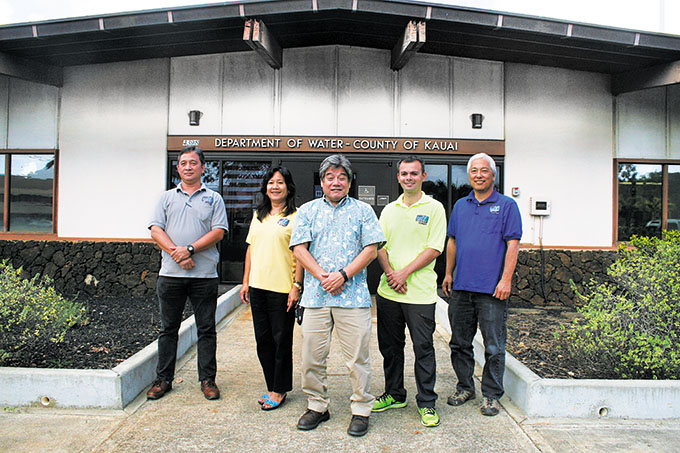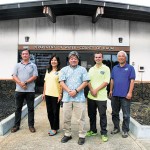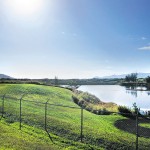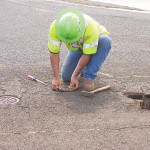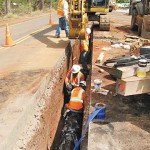Where Would We Be Without Water
How many times have you turned on the faucets in your house today without giving it a second thought? Or let the water run even when you weren’t actually using it? All too often we take water, the precious resource required to sustain life, for granted. Compared to many parts of the world, we are lucky to have such clean, safe drinking water provided to us in such an efficient manner. We have the Department of Water to thank for it.
Dispersing a continuous supply of water around the island is a never-ending job for this Kauai County department. A staff of 82 works together to maintain 400 miles of pipeline, 11 separate water systems from Haena to Kekaha, 50 deep well pumping stations and 58 storage tanks, among many other elements, for some 21,000 customers. Weekends and holidays don’t exist for Kirk Saiki, DOW’s recently appointed manager and chief engineer, who is on-call 24/7, sometimes receiving phone calls at 2 in the morning when a pipeline bursts or other water emergencies occur.
“The water department must operate our water system continuously, every day, without interruptions,” he says.
This year, the department, which is semi-autonomous, generating its own revenue through its accounts, is focusing not only on continuously providing reliable service but also on upgrading aging infrastructure. The idea is to follow the “Water Plan 2020,” implemented in 2001 as a 20-year goal to replace all of the DOW’s aging structures around the island.
In 2015, the plan includes many projects — including increasing the size of waterlines in Kilauea to accommodate expected growth. Construction adjacent to DOW’s current headquarters in Lihue off Kaumualii Highway is part of this year’s plan as well. This $10.6 million undertaking, called “Lihue Baseyard Improvement Project,” will serve as DOW’s new and improved facility. The building will even be created and classified as Leadership in Energy and Environmental Design (LEED), taking into account various environmental features such as photovoltaic systems to generate energy.
- Keeping clean water flowing is the job of Kirk Saiki (center), the Department of Water’s new manager and chief engineer. He’s pictured with staff (from left): Val Reyna, Marites Yano, Dustin Moises and Keith Aoki
- A surface water treatment plant on Kauai
- Some DOW employees are on-call 24/7 in order to respond to emergencies such as pipeline breaks or leaks
- One of the many DOW projects being completed in order to upgrade island water systems
- Kirk Saiki, the Department of Water’s newly appointed manager and chief engineer, poses for a photo with some of the members of his staff (from left): Val Reyna, Kim Tamaoka, Debra Peay, Dustin Moises, Saiki, Mary-jane Akuna, Marites Yano, Eddie Doi, Carl Arume and Keith Aoki.
Most importantly, this year DOW will persist in getting the message across to customers that water is an invaluable resource that must be conserved.
“We care about how much water is used,” says Saiki. “We have a lot of water on this island, but we shouldn’t be wasting it. We say conserve water. What we’re really saying is don’t waste it.”
The environment has been important to Saiki for many years. The Waipahu, Oahu, native has been keeping the planet’s best interests at heart since earn ing his bachelor of science degree in civil engineering from University of Hawaii-Manoa. He brought his passion for preserving the environment into his three decades of service managing engineering teams, departments and offices in a mixture of industries including water and wastewater. While working as a principal engineer for Lee and Ro Inc. in California, Saiki was given the opportunity to return to Hawaii when he was offered a job as deputy manager-engineer at DOW in 2013. Shortly thereafter, he was promoted to the lead position, and now he’s responsible for the entire operation of DOW. Or, as he says, “from soup to nuts.”
Distributing about 12 million gallons of water around the island every day is not a solo venture, however, and Saiki credits his hard-working team for keeping everything running as smoothly as possible.
“Our employees understand that we need to balance the time and work spent on system maintenance, rehabilitation and expansion with the costs involved,” he says.
When asked what Saiki is most proud of accomplishing at DOW, it’s not the projects he’s helped facilitate but the employees that he has the most praise for.
“We have operations and water quality staff who will come to work in the middle of the night to address problems with our water system. We have engineers and inspectors assuring that all our projects are designed and constructed correctly,” he explains.
He even recognized the dedicated staff members who lend their time to train elementary school teachers across the state on how to deliver a water conservation curriculum to their students called Project WET (Water Education for Teachers). This program is tied to a festival for fifth-graders called “Make a Splash,” which also requires the hard work of employees committed to the preservation of clean and safe drinking water.
Educating youths and the rest of the community to be responsible when it comes to water usage is a team effort.
“Water is our most precious natural resource, so it is important for all of us to protect and conserve it. We believe it’s significant for our department to educate our customers and the community about protecting our water resources,” says Saiki.
So the next time you forget to turn off the faucet while brushing your teeth, try to remember all the time and energy that went into providing that convenience for you, and that water is not an infinite resource.
Visit kauaiwater.org for more information.
cocomidweek@gmail.com

